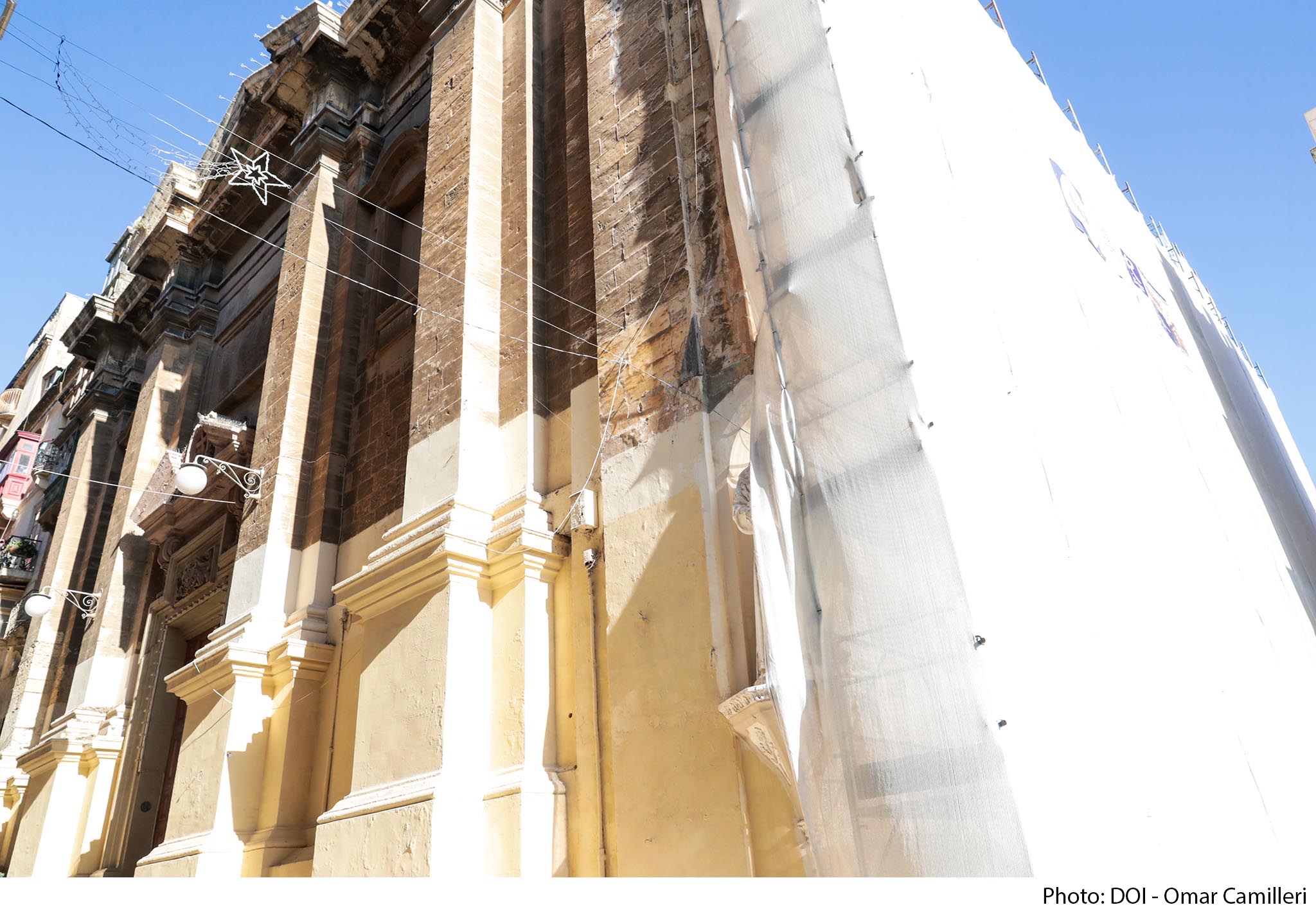
The exterior of the historic Franciscan Church of St Mary of Jesus in Valletta – popularly known as the Ta’ Ġieżu church – is being restored through a €300,000 project overseen by the Restoration Directorate within the Ministry for the National Heritage, The Arts and Local Government.
The guardian of the church and adjoining convent, Fr Ramon Farrugia, told Newsbook.com.mt that the friars had dreamed of the opportunity to restore the exterior of the church. Restoration works have also been taking place in the interior of the church and in the convent.
Fr Farrugia had become the church’s guardian in 2020, and had immediately highlighted back then that the friars’ limited financial resources precluded them from carrying out the restoration the historic structure sorely needed.
Public funding, however, has made this project possible, and Fr Farrugia is now looking forward to the not so distant future.
“With the help of the ministry and the directorate, our hope is that within a year from now, the church’s exterior will be restored to the full glory and dignity it deserves,” he said. The government has confirmed that the works are expected to be brought to completion by January 2024.
The restoration is being overseen by Jean Frendo, a senior architect at the Restoration Directorate, who explained that the façade’s stone badly needed cleaning to remove an accumulation of carbon and sulphur compounds as well as other contaminants.
“After the removal and cleaning of the cement and plaster coating, the disintegrated limestone will be replaced with course heights that match the original. Stonework that has deteriorated to the point that it threatens stability and detracts from the architectural appearance of the building or is dangerous for users or passers-by will also be replaced,” the architect explained.
Minister Owen Bonnici said that the restoration project helped achieve the government’s objective of making Malta’s cultural heritage more accessible to the general public.

A 450-year history
The Franciscan friars were given a plot of land in the newly-built city of Valletta in 1571, on which they were to build a church and convent. The original church was designed by the renowned Maltese architect Girolamo Cassar.
But as has been the case with many buildings of the age, its façade was eventually replaced with a more contemporary design in 1680. The architect this time round was a French engineer working with the Knights of St John, Mederico Blondel.
The church has accumulated numerous artistic and religious artefacts over the year, of which the most notable is likely its Miraculous Crucifix, made by Sicilian friar Innocenzo da Petralia Sottana around 1630. Also notable is a painting of Our Lady of Sorrows by the Maltese painter Stefano Erardi, who lived from 1630 to 1716.
But the premises have also been witness to one of the worst peacetime tragedies ever to take place in Malta: the Carnival tragedy of 1823. Around 110 boys hailing from Valletta and Cottonera were killed in a human crush after lining up to receive free bread after attending mass, in an activity aiming to keep children out of the riotous atmosphere that often marked carnival at those times.
The group of children who had attended mass were soon joined by adults and children from the general public, and dozens were killed from trampling or suffocation in a corridor accessed from the church’s sacristy.
Source: Newsbook.com.mt





